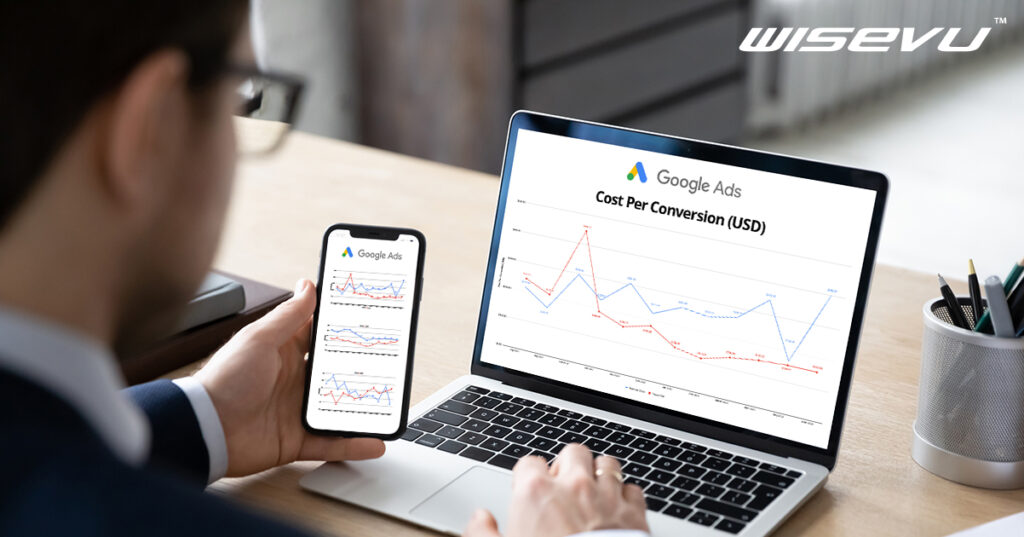Choosing the Right Google Ads Bidding Strategy: A Wise Experiment

When running a Google Ads campaign, one of the primary decisions advertisers make is choosing an appropriate bid strategy. In a recent experiment for a cosmetic GYN surgeon, we explored the efficacy of the two most popular Google Ads bid strategies: "Maximize Clicks" and "Target CPA." Over 12 months, we conducted a 50/50 split test in this niche market to understand which strategy optimizes ad spend and conversions more effectively.
Objective & Methodology
Our experiment aimed to optimize ad spending and conversion rates by simultaneously implementing two bidding strategies:
Maximize Clicks: This strategy focuses on accumulating the highest possible number of clicks within a set budget.
Target CPA: Contrarily, Target CPA emphasizes acquiring conversions at a predetermined cost per action.
We allocated the budget evenly between the two strategies, ensuring a fair and balanced comparison.
Month-on-Month Performance Analysis
Our critical analysis covered several key metrics: AD Spend, Average CPC (Cost Per Click), Total Conversions, Conversion Rate, and Cost Per Conversion.
Total Ad Spend
Over the months, the Maximize Clicks bid strategy led to higher advertising spending. This was expected, as the strategy focuses on using the entire daily budget to obtain as many clicks as possible. Even with a 50/50 budget split, the Target CPA strategy, which aims to optimize conversions within a target cost per acquisition, demonstrated a more variable expenditure. As the algorithm of the Target CPA strategy learned and optimized for conversions within the set limit, some months saw a significant reduction in ad spend, indicating more efficient use of the budget.
Avg CPC (Average Cost Per Click)
Through the 12-month period, The "Target CPA" strategy always achieved a lower average CPC than Maximize Clicks. This suggests that Target CPA was more efficient in bidding due to its focus on conversions rather than clicks. By targeting users who are more likely to convert, the Target CPA strategy may have bid lower yet obtained valuable clicks, thereby reducing the average cost per click.
Cost per Conversion
Initially, for the first 3 months (July to Sep), the cost per conversion was higher for the Target CPA strategy, which could be attributed to the learning phase where the algorithm was still gathering data. However, over time (on the 4th-month mark, i.e., October), Target CPA began to show a downward trend in cost per conversion. This indicates the strategy's increasing efficiency in acquiring conversions at a lower cost, aligning with the goal of maintaining a consistent and target CPA.
Conversion Rate
Conversion rate is particularly influenced by the quality of the audience reached and the effectiveness of the ad creative and landing pages. While "Maximize Clicks" brought in more traffic, it didn’t necessarily mean more conversions. In contrast, "Target CPA" clearly brought in less traffic but with a higher intent to convert
Stabilization of the Target CPA Bid Strategy
The stabilization of the Target CPA bid strategy is a critical phase where the algorithm's performance starts to meet or exceed the set targets. Analyzing this period involves understanding how the performance metrics evolve over time, indicating that the machine learning algorithm has adjusted to the nuances of the campaign and is achieving its objectives more efficiently. Let's break down this analysis further:
Early Phase (Initial Learning)
In the early months of using Target CPA, we saw higher cost per conversion due to the algorithm learning, which auctions and user behaviors were likely to lead to conversions at the desired CPA. During this time, metrics fluctuated as the strategy tried different bidding amounts across various auctions.
Middle Phase (Optimization)
After the initial learning phase, which lasted for 3-4 months, we moved into the optimization phase. Here, the algorithm began leveraging the data it had collected to make more informed bidding decisions. This is where we saw a downward trend in the cost per conversion (October 2022) and an improvement in the conversion rate for the Target CPA strategy. The efficiency of ad spending also started becoming more evident.
Mature Phase (Stabilization)
The stabilization phase, in general, is characterized by consistent performance that meets or exceeds the target CPA goals. By this time, the Target CPA strategy accumulated enough data to understand the best opportunities for conversions and, therefore, bid more effectively. We looked for signs of stabilization, such as:
- A consistent or decreasing trend in cost per conversion over several months.
- A steady or improving conversion rate that didn’t significantly fluctuate.
- Ad spending that reflects an efficient use of budget, i.e., not increasing spend to chase conversions.
Summing it Up
From our comprehensive analysis, it's clear that both bid strategies have their merits and are suited for different campaign objectives. Maximize Clicks is ideal for driving traffic, whereas Target CPA is focused on driving conversions within a cost-efficient framework. The strategy should be based on the campaign's goals, the conversion funnel's effectiveness, and the target audience's behavior.
As for long-term strategy, the Target CPA does offer more value by bringing in more qualified leads at a lower cost per conversion, but it requires a period of learning and optimization. Therefore, being prepared for an initial phase where performance might not meet expectations, but with proper adjustments and continuous optimization, Target CPA" can become more effective over time.
Over the 12-month period, The Target CPA strategy consistently maintained a lower and more stable Cost Per Conversion, and its Conversion Rate increased, indicating improved targeting and ad relevance. On the other hand, the Max Clicks strategy, while successful in reducing the average CPC in the initial months, showed less efficiency in converting clicks into actions, as evidenced by its higher and more fluctuating Cost Per Conversion and eventually a decrease in Conversion Rate.
Therefore, for campaigns aiming for cost-efficient conversions and consistent performance, Target CPA proves to be the preferred strategy, especially in hyper-niche and expensive markets like cosmetic gynecology.
Want to Take Your Medical Practice to the Next Level by Leveraging Google Organic and Paid Advertising?
You’ve landed just in the right place! Being leaders in Digital Marketing for Medical Practitioners, we have the right team, tools, experience, and expertise that could help your practice convert more prospects into patients.
